On the opening weekend of the Premier League season, the newly-promoted Bournemouth met an optimistic Aston Villa side with high expectations from spectators. This fixture looked quite simple for Aston Villa, with Bournemouth being the bookies’ favourites to being relegated and not spending too much in the transfer market.
Steven Gerrard’s first stint in management at Rangers was very successful, helping them win a first league title in 10 years and going undefeated over the entire league campaign. He earned a move to the Premier League following Aston Villa’s sacking of Dean Smith after a disappointing start to the season. Life in the Premier League looked promising, with four wins in the first six and only 2 defeats to Manchester City and Liverpool, however, the second half of the campaign went under the radar with frequent poor performances and a team which lacked identity.
Aston Villa have spent £50 million in the summer, with high-profile signings added to the squad and haven’t lost any first-team regulars from the previous season. Many fans saw Aston Villa as a side which could be challenging for a European spot and attempting to be the best of the rest, however, there were many warning sides in the back end of the last season that many fans overlooked. Poor form, combined with pre-season drama in Tyrone Mings being stripped of the captain’s role and Gerrard telling him to “look him in the eye and show him he’s ready to play” has resulted in a turbulent start to the season, and pressure rising on the manager.
This tactical analysis will delve into the tactics used by Aston Villa. The analysis will display the problems that Villa faced during their match, and why this bleak performance should be a cause for concern for Steven Gerrard and the Aston Villa fans expecting a positive season.
Lineups and formations
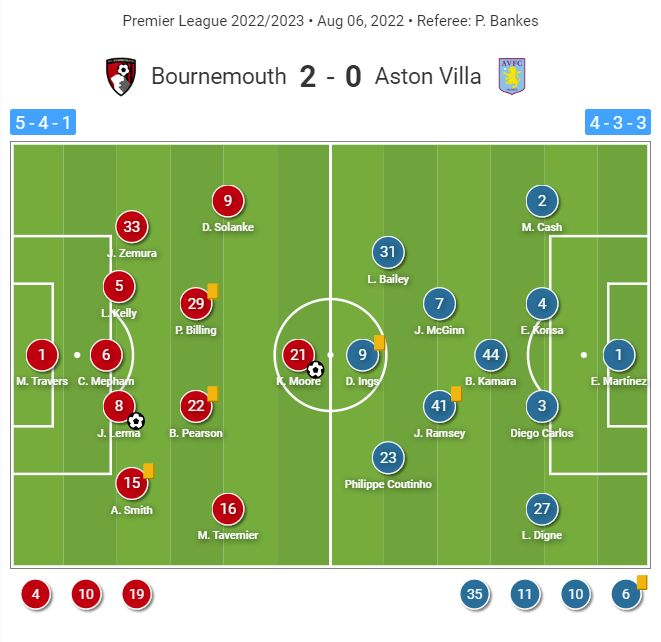
Scott Parker set his Bournemouth side up in a defensive-minded 5-4-1 system, handing out a debut to Marcus Tavernier. The rest of the squad is the same one that helped the Cherries earn promotion to the Premier League. This team was set up for the defenders to launch long balls up to two big targets, Kieffer Moore and Dominic Solanke, and play on the counter.
On the other hand, Gerrard set his team up in a narrow 4-3-3, with the two wingers maintaining width and the two 8’s pushing further up the pitch. Leon Bailey earned a start after a strong pre-season, having missed most of the previous campaign with injuries. Diego Carlos was handed a debut at centre back, replacing ex-captain Tyrone Mings while Boubacar Kamara replaced Douglas Luiz.
Villa’s structure
In this match, Bournemouth rarely attempted to press Villa intensely during the build-up phase, instead opting for a mid-block in order to force Aston Villa to either play through them or over them. From goal kicks, Villa used a 4-1 shape to progress play, although on the rare instance they did get pressed in the 1st phase, they would go long to avoid the risk of losing possession in their own half.
There was a strange theme in this game, where Villa would continuously opt for long balls to the striker, Danny Ings, who doesn’t have the physicality to win aerial duels and hold the ball up. The image below perfectly illustrates how Kamara sends the ball up the pitch even though he is under no pressure and has plenty of options near him. This has to be an instruction from the manager, due to the constant use of long balls, even though they were unlikely to ever work out.
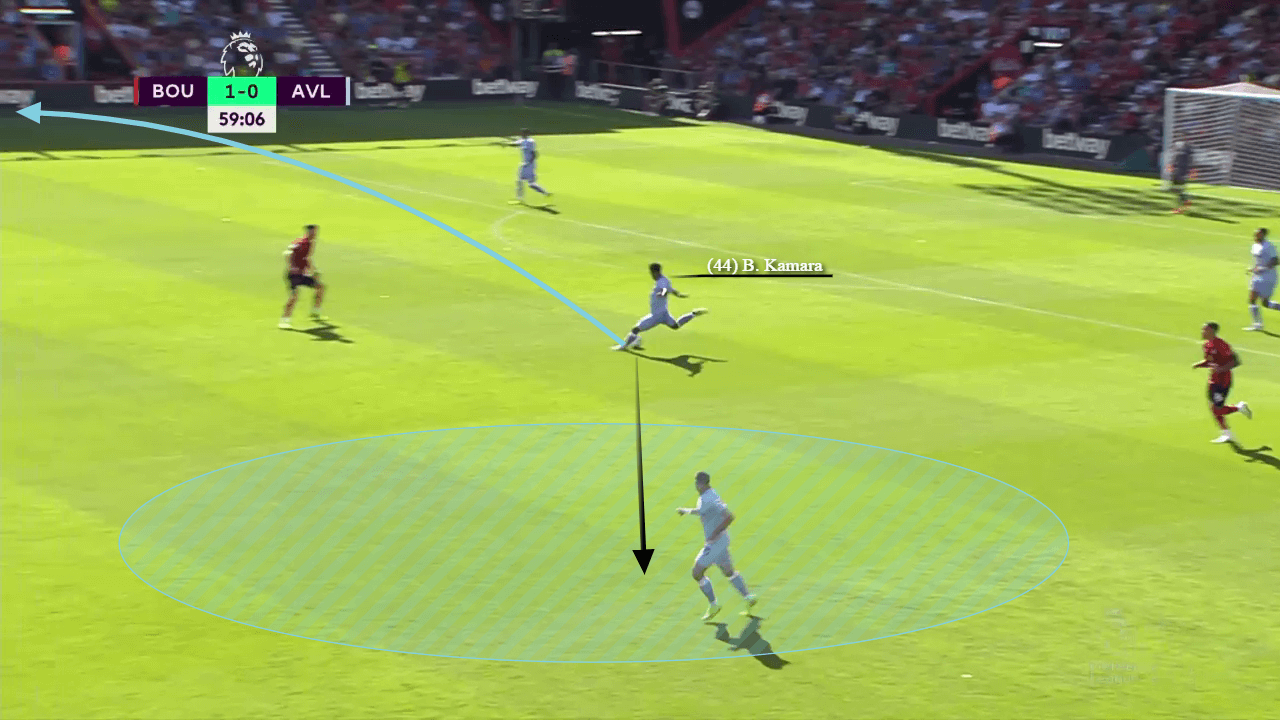
When Aston Villa progressed into the middle third, they still insisted on aimless long balls to the striker’s feet. With the creative likes of Coutinho and Digne, and clinical late runs from both McGinn and Jacob Ramsey, Aston Villa are a massive threat when they get into the final third and sustain pressure, however, poor tactics and a lack of a progressive midfielder have prevented them from creating chances regularly.
Below, is another example of Aston Villa having the ball in possession under no pressure, and just gifting the ball back to Bournemouth by attempting a difficult pass to Ings who gets beaten in the air. Rather than trying to play through a team, Aston Villa have been attempting tough and low-percentage balls which are unlikely to ever come off. The players seem to be lost on the pitch and there is a lack of patterns and principles the players are using to get up the pitch.
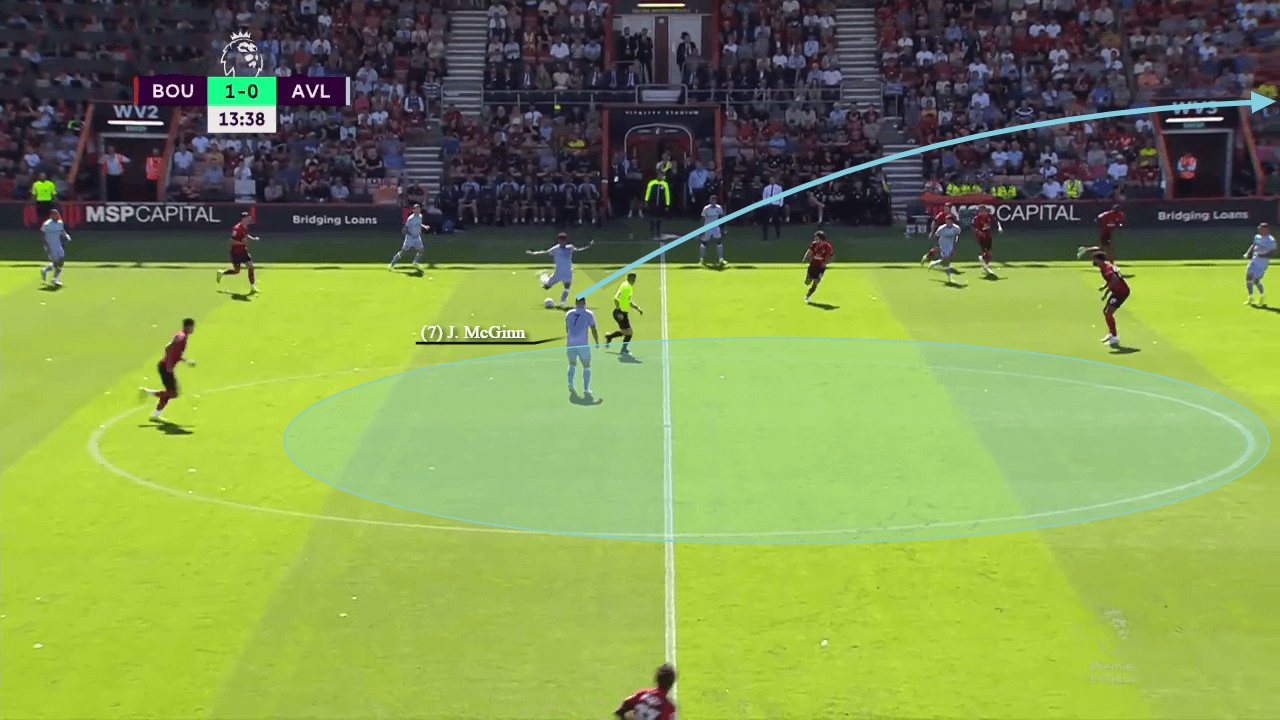
As mentioned before, the lack of a progressive midfielder massively inhibits Aston Villa’s ability to move up the pitch as a unit and retain possession for longer periods of time. In possession, Kamara drops between the defenders to form a back 3, whilst the two other midfielders make runs behind the last line during settled play. The image below shows how this leads to a massive hole in the structure of Gerrard’s set-up.
A 4-6 structure doesn’t allow for any progression through the thirds and is only a strategy which some teams use in the last minutes of a game when chasing an urgent goal. The use of this in the 15th minute against Bournemouth makes next to no sense, as Matty Cash is left with no choice but to gamble with a long ball in behind.
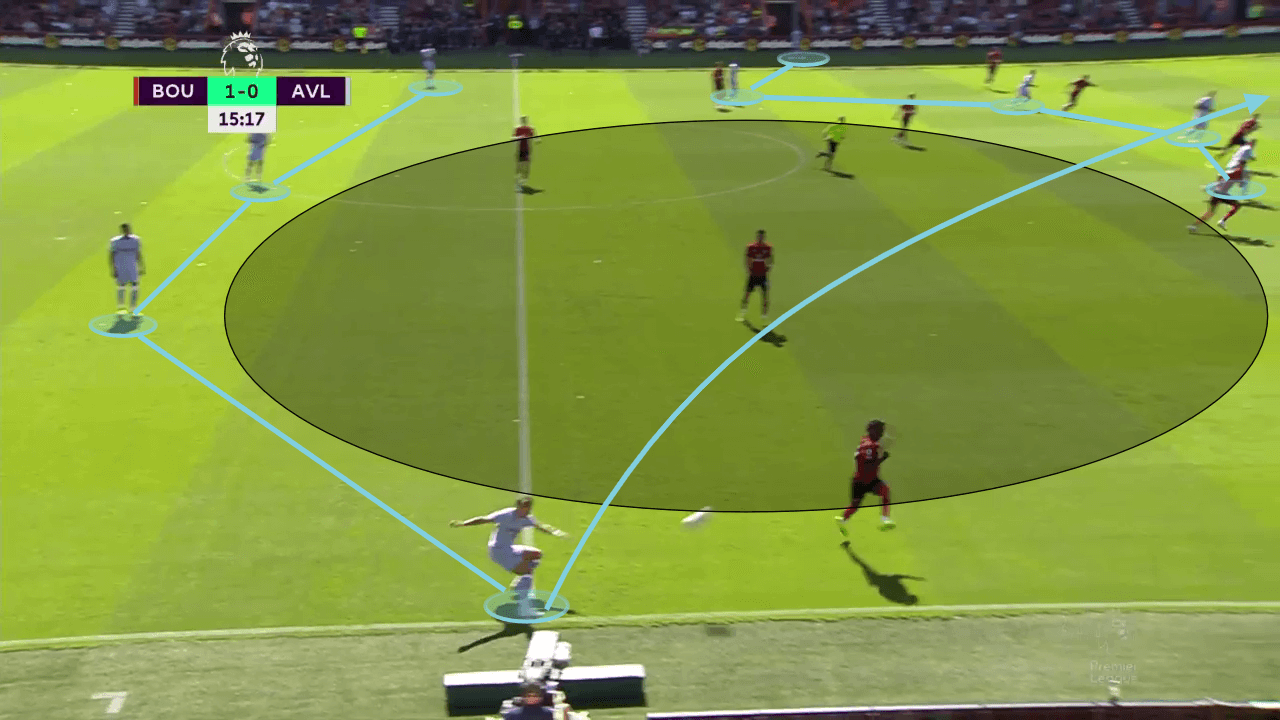
Lack of creativity
When those long balls by Aston Villa were successful on occasion and Villa kept possession of the ball in the final third, they looked out of ideas as to how to create any clear-cut chances. With 65% possession, Villa only managed 0.95 xG from 16 shots. 11 out of those 16 shots were attempted from outside the box, highlighting how desperate and out of ideas Villa were.
There was a lack of combinations in wide areas on both wings, something which is unusual considering the quality that Villa posses in those areas. Instead, the only method of chance creation Villa used were crosses from wide and deep areas. This image below illustrates the constant want to deliver crosses into the box even without any good targets to aim for. Neither Coutinho nor Bailey are strong at heading the ball, but Gerrard insisted on his players attempting these crosses against a Bournemouth backline which is physical and strong in duels.
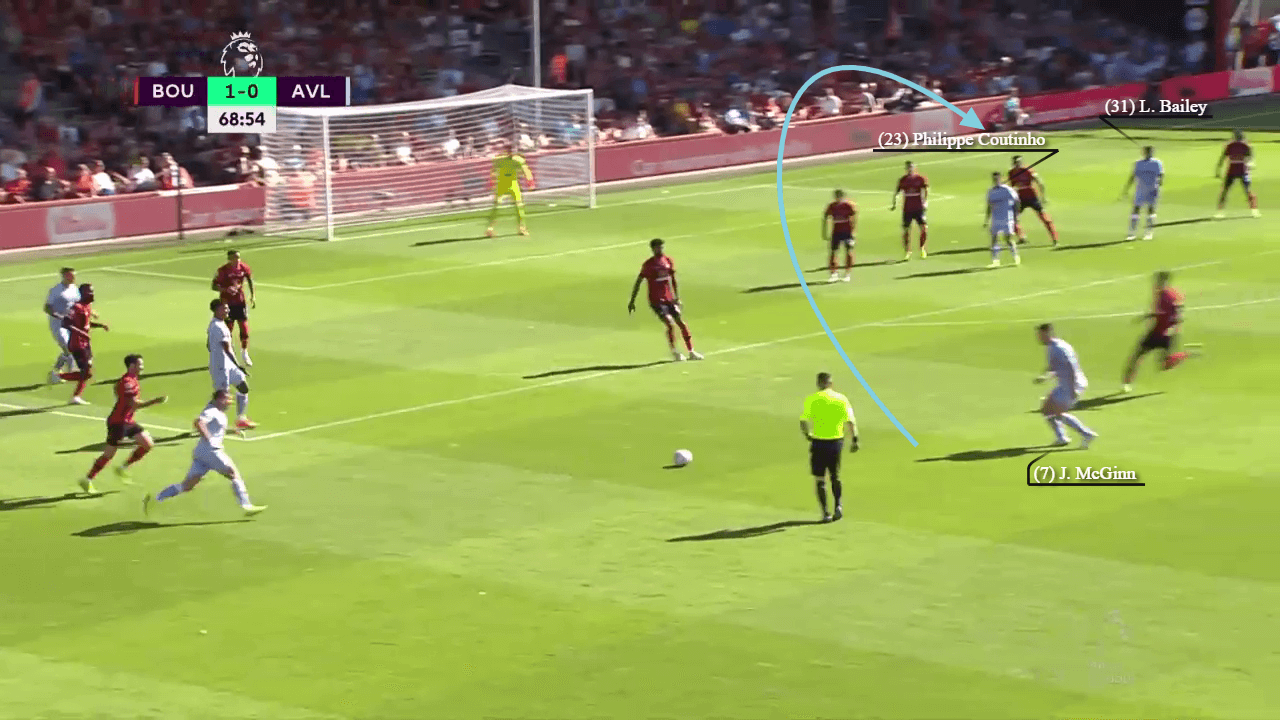
Aston Villa attempted 32 crosses in their last game, with only 8 of those being successful according to Wyscout. After the game, Gerrard revealed his frustrations at the lack of quality in the final actions from the forward players. Whilst he does have a point, Gerrard didn’t allow his players to have the optimal conditions for making perfect crosses. The Villa players were forced to put in crosses from unfavourable areas to players with limited aerial abilities due to the offensive structure used.
As mentioned earlier, the problems caused by a lack of a midfield presence led the Villa players to have to play extremely direct and lose focus on the combinations in which some players like Coutinho would thrive.
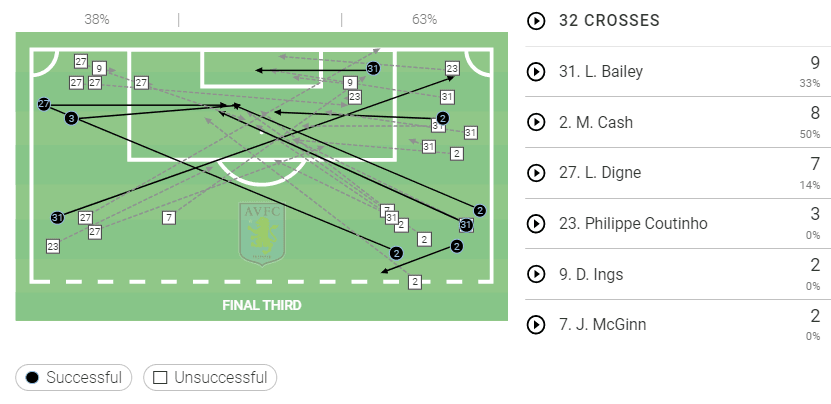
Another problem caused by the lack of passing options was that when players did receive the ball in dangerous areas, usually zone 14, the Villa players lacked composure and weren’t aware enough. The image below is a shot map of the Aston Villa players, where the majority of shots taken were from 25 yards or more. Shots from distance are obviously less likely to end up in the back of the net, and Bournemouth were definitely happy with letting Villa shoot from distance rather than trying to get closer to the goal.
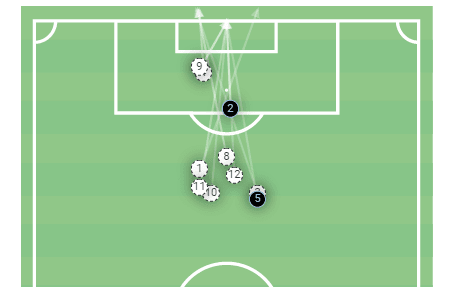
Defensive woes
Another area of concern for Aston Villa is their lack of a structured compact press. While they are good at closing down players aggressively in wide areas, Gerrard failed to make his team compact in their pressing. The image below highlights the pressure on the ball which is intense, but also pointless when the Cherries’ holding midfielder is available to receive the ball and allow his team to escape the pressure.
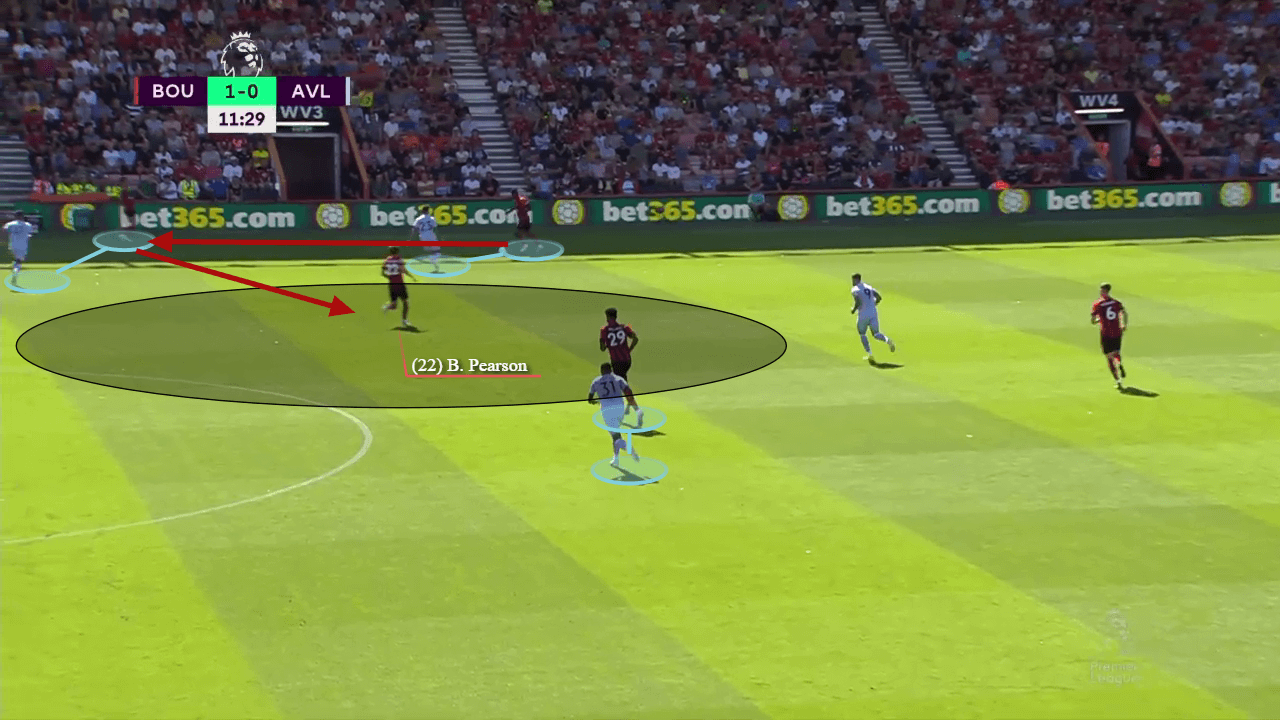
Gerrard has failed to structurally set his team up in a way where they can effectively press the opposition. The image below shows how the players start both too deep and wide to be able to force their opposition into a mistake.
Buendia starts too deep and, therefore, by the time he closes down the opposition centre-back, the ball is already played to the pivot player. Coutinho starts too wide, and therefore can’t get to Pearson in time. By the time he arrives, Pearson has already turned and picked out a forward player and Aston Villa have been carved open.
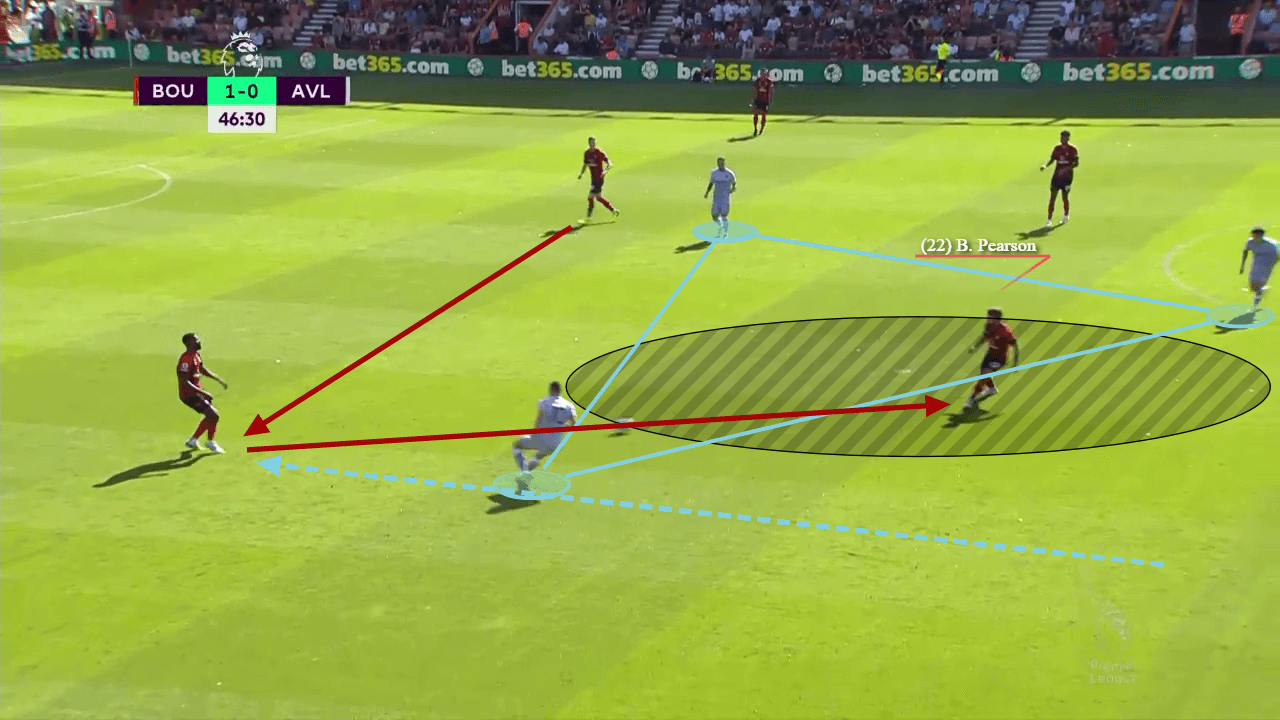
Another structural issue with Gerrard’s high press is the inability to cover all passing options. While an underloaded press can be effective, it is dependent on the right pressing angles and cutting off of passing lanes, something which is not achieved here. The image shows how Villa have pressed their opposition but failed to mark the pivot player who is in acres of space to receive the ball and progress the play.
Aston Villa were lucky to get away with this poor press, due to the fact Bournemouth preferred to go long rather than play through the pressure. When Villa come up against a better team, this weak press will be easily exposed and they will be continuously punished by clinical players.
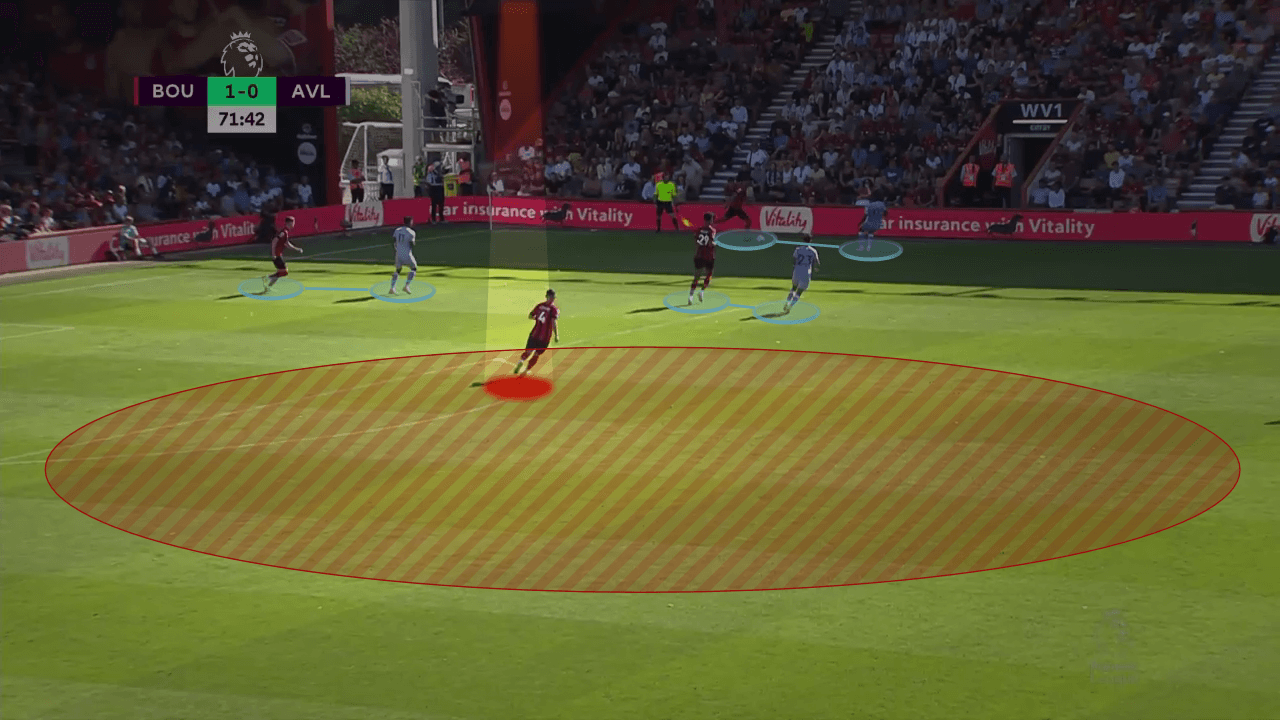
Aston Villa controlled the game due to the direct nature of Bournemouth’s style of play so there weren’t too many occasions where they had to defend against settled attacks. However, on the occasions they did defend deeper, they continued to show fundamental errors which they were lucky to get away with.
Aston Villa defend very narrowly in their 4-3-3, which leaves the wide areas exposed. Leaving three in the frontline means that if the ball does get past them, the rest of the team is very vulnerable. The midfield three has too much distance to cover from side to side, causing a defender to push up from the backline to apply pressure, which leaves a gap for the Bournemouth player to attack.
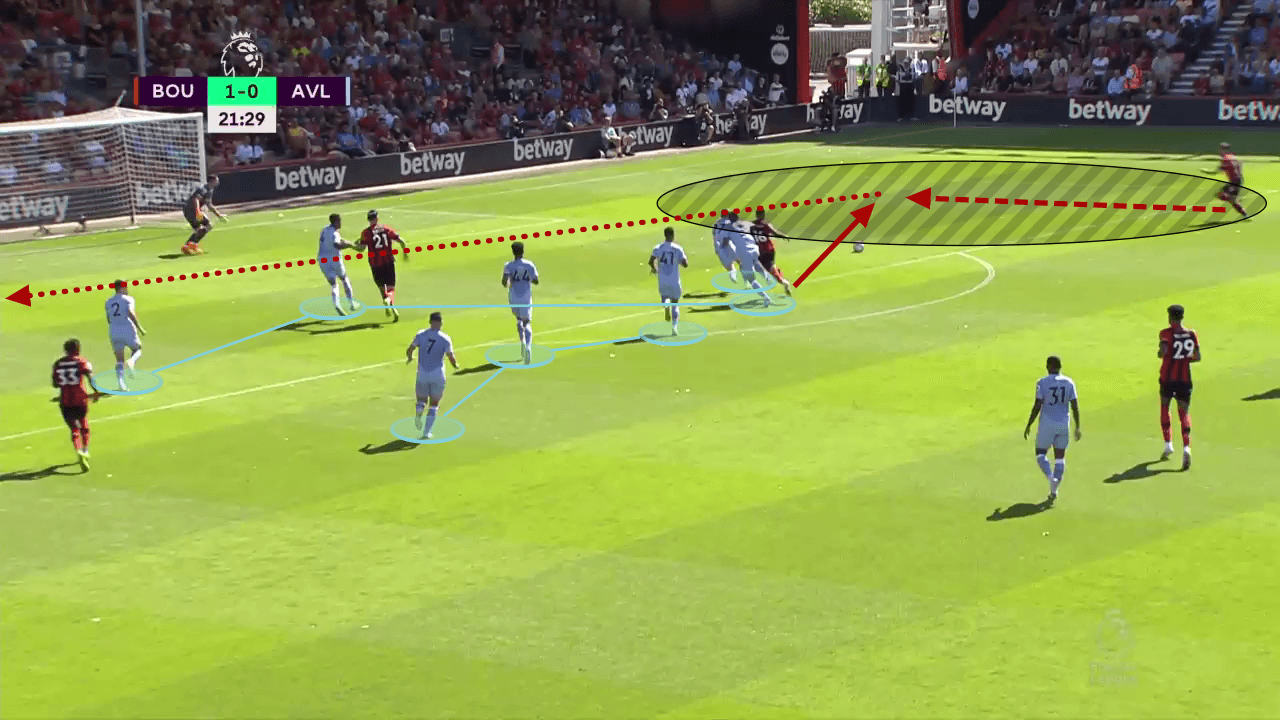
The other obvious area where Villa have been vulnerable is from set-pieces. Aston Villa have failed to stick with their men and attack crosses with aggression which has led them to concede chances from set pieces week in and week out. Their failure to control games even against weaker opposition means that they are susceptible to conceding goals to either a counterattack, or from set-pieces against any team in the Premier League.
Conclusion
Aston Villa disappointed on the opening week of Premier League football, and while this may have come as a shock, their bleak performance against a deep block was anything but a surprise. Villa performed better in attacking transitions, something that Bournemouth didn’t allow due to their knowledge of Villa’s lack of positional play and creativity against deeper blocks.
The poor pressing and constant crosses should be something that fans get used to as pressure on Gerrard will increase, and Aston Villa fans should be looking over their shoulders rather than thinking about climbing up the table.






Comments